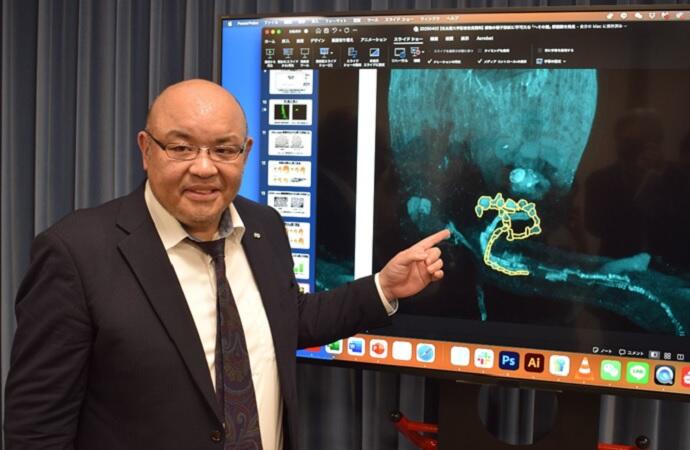A research group led by Designated Associate Professor Ryushiro D. Kasahara and Designated Professor Michitaka Notaguchi of the Bioscience and Biotechnology Center at Nagoya University, along with the Institute of Transformative Bio-Molecules at Nagoya University, have discovered a new tissue (the Kasahara Gateway) that acts as an "umbilical cord" essential for plant seed formation. This is the first discovery of a new plant tissue in 160 years. The group's findings were published in Current Biology.

In flowering plants, fertilization occurs when the sperm cells within the pollen from the stamen double-fertilize both the egg cell and the central cell inside the ovule within the pistil to create seeds. When researchers stained successfully fertilized ovules and failed ovules with aniline blue, they found that in failed fertilization, callose (a type of polysaccharide) was not degraded. Interestingly, this callose accumulated in a location opposite to where the pollen tube extends toward the egg cell. Kasahara explained, "The discovery began when we were experimenting to understand why plants cannot form seeds when fertilization fails." When fertilization succeeds, the expression of two genes that produce callose-degrading proteins, AtBGppap and BG1, increases. These proteins dissolve the callose, allowing nutrients to flow to the ovule and enlarge the seed. When fertilization fails, the ovule doesn't sense fertilization, so the callose remains intact, blocking nutrient flow and causing the seed to die. When examining this nutrient flow, the group found that in failed fertilization, some structure was preventing nutrient inflow. By staining with a phloem marker, they discovered a gate-like structure (the Kasahara Gateway) that regulates the passage of nutrients.
"Histology itself has been stagnant for around 150 years, but I felt we needed to do this properly, which is why we proposed this as a new tissue," said Kasahara.
While studying nutrient flow, the group discovered that in AtBGppap mutants, Arabidopsis seeds became 8% smaller. When they overexpressed this gene, the Kasahara Gateway remained permanently open, making seeds 16% larger. In rice, seeds grew 9% larger. This system could potentially be used to enlarge various types of seeds.
Kasahara added: "In animals, nutrients are supplied through the umbilical cord after fertilization, but if fertilization doesn't occur, no umbilical cord forms. This is because if the passage were open before fertilization, nutrients would be wasted. Similarly, in plants, callose is removed after fertilization, opening the nutrient passage. With the discovery of this new tissue, we've found a biological system common to both plants and animals. This represents a new development in the basic science of plant seed formation."
Journal Information
Publication: Current Biology
Title: Fertilization-dependent phloem end gate regulates seed size
DOI: 10.1016/j.cub.2025.03.033
This article has been translated by JST with permission from The Science News Ltd. (https://sci-news.co.jp/). Unauthorized reproduction of the article and photographs is prohibited.




